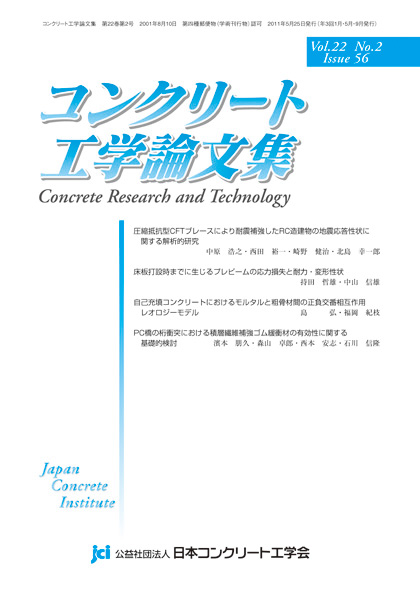Volume 32
Displaying 1-8 of 8 articles from this issue
- |<
- <
- 1
- >
- >|
-
2021Volume 32 Pages 1-12
Published: 2021
Released on J-STAGE: January 15, 2021
Download PDF (10758K) -
2021Volume 32 Pages 13-23
Published: 2021
Released on J-STAGE: January 15, 2021
Download PDF (6892K) -
2021Volume 32 Pages 25-33
Published: 2021
Released on J-STAGE: January 15, 2021
Download PDF (2000K) -
2021Volume 32 Pages 35-47
Published: 2021
Released on J-STAGE: March 15, 2021
Download PDF (1565K) -
2021Volume 32 Pages 49-57
Published: 2021
Released on J-STAGE: March 15, 2021
Download PDF (4586K) -
2021Volume 32 Pages 59-71
Published: 2021
Released on J-STAGE: July 15, 2021
Download PDF (9335K) -
2021Volume 32 Pages 73-84
Published: 2021
Released on J-STAGE: September 15, 2021
Download PDF (26355K) -
Analytical Estimation of Corrosion Rates of Reinforcing Bars in Concrete Based on Oxygen Consumption2021Volume 32 Pages 85-93
Published: 2021
Released on J-STAGE: November 15, 2021
Download PDF (1332K)
- |<
- <
- 1
- >
- >|
